A lot of my clients come to Pilates to improve their core strength, they understand that core strength can reduce back pain, improve posture and reduce tension in the shoulders and hips. What they don’t often know is that core strength and Pilates is more about connection and coordination than the strength of particular muscles. You can get strong abs without improving your core or your posture or reducing pain and tension in your body, in fact strong abs can result in a tighter, less responsive pelvic floor. So what do you do to improve your core strength?
What is core?
First, our core is not one muscle but a set of muscles and the primary purpose of the core muscles is to enable us to breath. The secondary purpose of the core muscles is to support all the organs in our torso. Our core muscles are:
- Deep abdominals – Transverse Abdominis (the front)
- Deep back muscles – Erector Spinae (the back)
- Pelvic floor muscles – Levator Ani, Coccygeus, Anococcygeal Ligament and Piriformis (the base)
- Diaphragm muscle (the lid)
When we focus on gripping the base of our core (our pelvic floor muscles) as we might in a plank or when we do a hundred sit ups, we fix the lower half of our breathing muscles. When this becomes habit we get very tight pelvic floor muscles that are not able to stretch to allow full and proper breath (although we might have fabulous looking abs). This pelvic floor tightness can also cause stress incontinence (leakage of urine when coughing, sneezing or laughing).
Breath is absolutely essential to connecting with and coordinating our deep abdominals. It is not possible to ‘switch on your core’ or ‘engage your core’ without utilising your breath. Our diaphragm (under our ribs) is the key muscle involved in breath, the movement of the diaphragm creates pressure. If the deep abdominals are out of synch with the diaphragm then the excess pressure pushes down on the pelvic floor and this can do long term damage to both men and women.
If core is breath how do I strengthen it?
Great question! You coordinate your muscles with your breath. You learn to let your muscles initiate the breath. It is the coordination of the muscles working together that gives you a sense of length in your torso and spine. This can transform any movement or exercise you do.
Many preparatory exercises in the Pilates repertoire are designed to teach coordination of the core muscles with the breath. Here is an example of a beginner exercise to begin practicing.
Getting the load right…
Once you have practiced the coordination of the muscles with the breath we can start to add load, very precisely. Too much load and you simply tighten up into old habits, not enough and you won’t get stronger. This is where a trained and experienced movement teacher (yoga or Pilates) or Pelvic Floor Physiotherapist can help.
Alignment also plays a role here. You want your hips to be level and your spine to be neutral, with no buckling or bending in the spine. You can lift one leg to ad some load, and lift and lower it whilst the spine stays steady. Then lift the other leg, does your spine bend or arch away from the mat? If so this load is too heavy, so return to one leg and then the other. Slowly but surely working with the breath we get stronger.
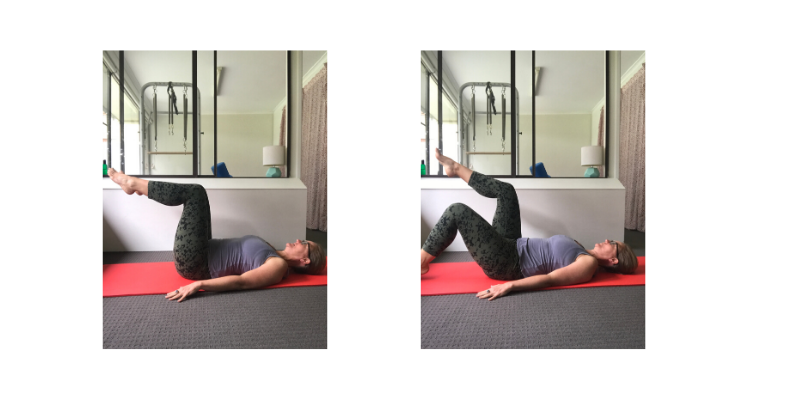
If you would like to know more, sign up below to get information about the next webinar “Pelvic Prosperity and Core Strength”. I am Brigid Pearse a certified Pilates instructor and ex-dancer and a mum. I run a fully equipped Pilates studio from my home in Lennox Head and I run community Pilates mat classes in Byron Bay, Ballina and online. To receive regular body wisdom sign up below.
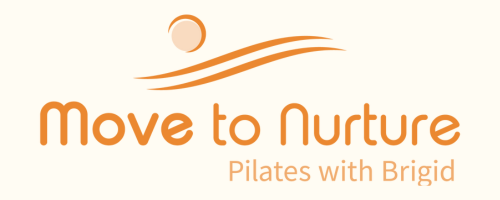
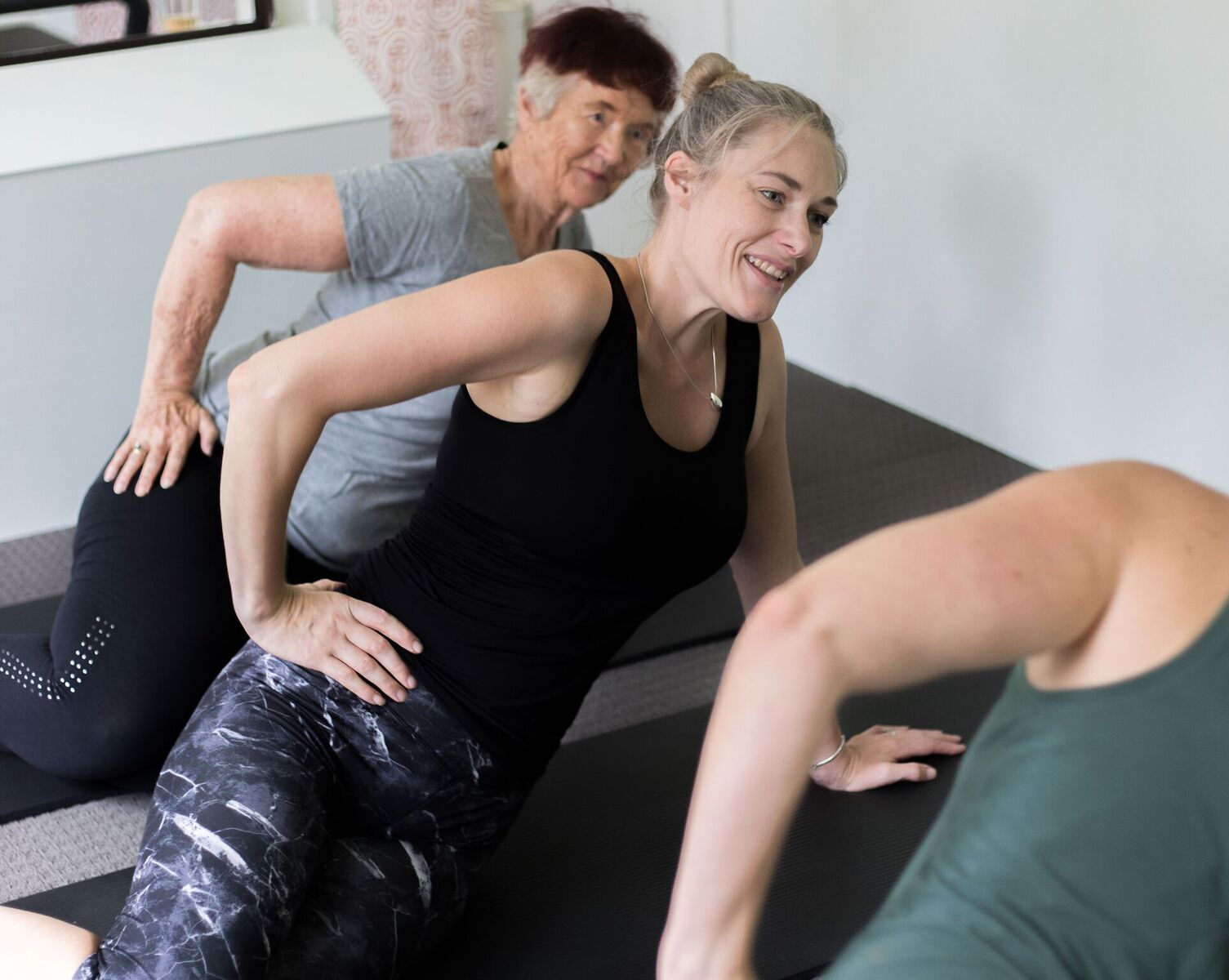
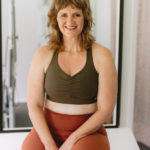
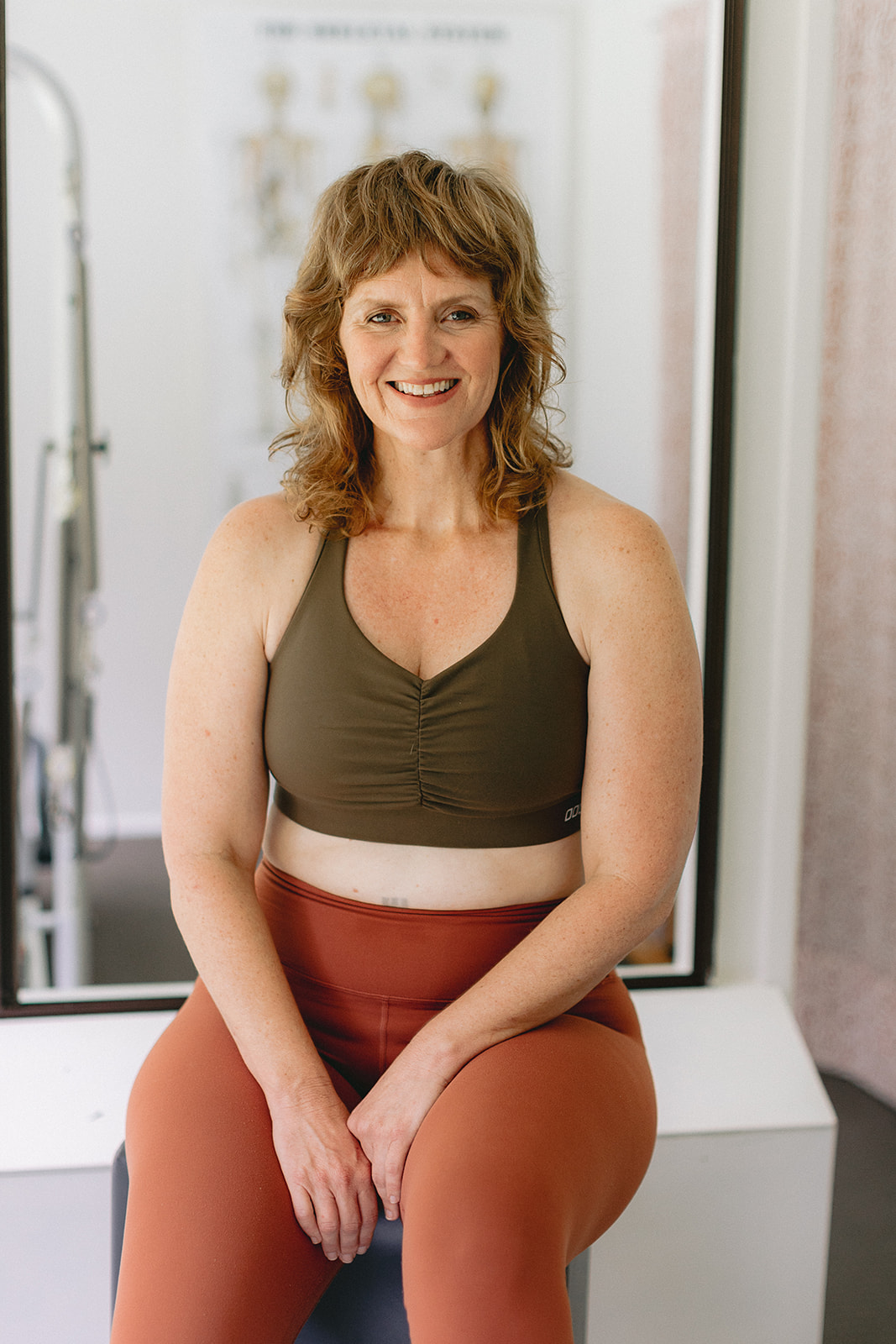



0 Comments
Trackbacks/Pingbacks